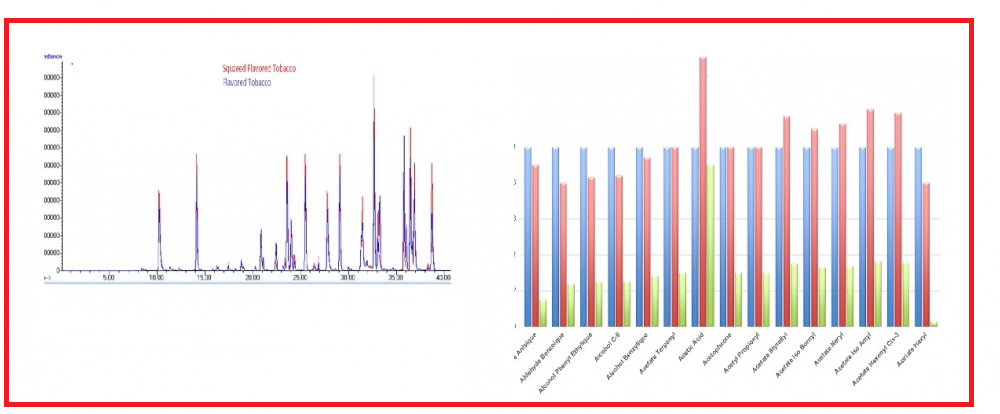JOURNAL 3087
Records of Agricultural and Food Chemistry
Year: 2024 Issue: 3 Special Issue: Abstracts 3rd. TCS, International Food Chemistry Congress February 29-March 03,2024 Antalya Türkiye
p.49 - 49
Viewed 701 times.
GRAPHICAL ABSTRACT

ABSTRACT
Over the past two decades, there has been an increased interest and usage of tobacco flavor additives [1]. Dried cured tobacco leaves are consumed by various ways such as in cigarettes, cigars, flavoured tobacco, hookah, snuff, chewing tobacco, dipping tobacco and snus. Tobacco is one of the most widely abused substances in the world and is found to be highly addictive for its major alkaloid stimulant-nicotine. The tobacco plant is a part of the genus Nicotiana and of the Solanaceae (nightshade) family. While more than 70 species of tobacco are known, the chief commercial crop is Nicotiana Tabacum [2]. The mechanism of hookah tobacco smoking is unique. First, the tobacco is heated indirectly with charcoal, then the smoke passes through a water bowl and finally is inhaled by the smoker through a rubber hose fitted with a mouthpiece [3]. In this study, we aim to answer the basic question: What are the aromatic substances in flavored hookah? Collection of volatiles using SPME led to the identification of 15 volatile compounds. The final product, hookah, was prepared with a sweetening agent of known formulation at a dosage of 5%. The aroma of the prepared hookah was left to rest for 5 days before being transferred to tobacco. The prepared hookah GC-MS device was read with 2 different methods using the SPME method. A 2 g sample was taken directly from the flavored hookah tobacco prepared in one of these methods into a headspace bottle and entered into the GC-MS device. In the other method, 2 g of flavored hookah tobacco sherbet was squeezed, diluted with 10 milliliters of chloroform, and 300 µl of this solution was injected into the headspace vial. An Agilent 19091n-136 gas chromatograph interfaced directly with an HP-INNO Wax mass selector Detector was used to separate and analyze tobacco headspace components. Unsplit injections were performed at 250 °C using a manual solid-phase microextraction (SPME) syringe equipped with commercially available SPME fibers. Separation was performed using an HP-INNO Wax column (60 m × 250 μm × 0.25 μm). The initial oven temperature was 40°C for 1 min and then increased to 240°C at a rate of 5°C/min. Mass spectrometric detection was performed in scanning mode. As a result of the analysis, the amount and characterization of 15 volatile compounds in tobacco at 5% dosage were determined. Volatile components in the formulation; acetate hexenyl cis-3, acetate hexyl, acetate iso amyl, acetate isobornyl, acetate neryl, acetate styrallyl, acetate terpenyl, acetic acid, acetophenone, acetate propionyl, alcohol benzylique, alcohol c-6, alcohol phenyl ethylique, aldehyde anisique, aldehyde benzoique. In order to determine the characterization of flavored tobacco, GC-MS SPME method study was carried out with two different methods and according to the chromatography results of each of the 6.66% volatile components in the formulation, 93% success was obtained by capturing 6.22% of the volatile components obtained from tobacco sherbet compared to the components obtained from tobacco.
KEYWORDS
- Flavor
- hookah
- GC-MS SPME